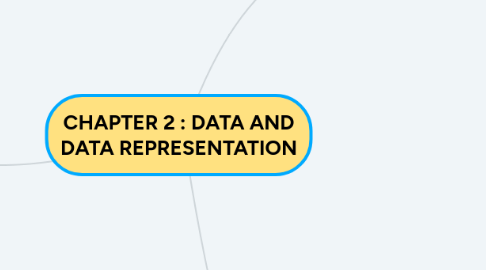
1. Data, Information and Processing
1.1. DATA FORMAT
1.1.1. COMPUTERS = process and store all form of data in binary format
1.1.2. HUMAN COMMUNICATION = language, images, sounds
1.1.3. DATA FORMATS
1.1.3.1. specifications for converting data into computer usable form
1.1.3.2. define the different human and computer data be represented,stored & processed by a computer
1.2. INFORMATION PROCESSING CYCLE
1.2.1. INPUT (collect data)
1.2.2. PROCESS
1.2.3. OUTPUT (produces information)
1.3. DATA, INFORMATION, KNOWLEDGE
1.3.1. DATA
1.3.1.1. unprocessed facts and figures
1.3.2. INFORMATION
1.3.2.1. data that has been interpreted
1.3.3. KNOWLEDGE
1.3.3.1. information, experience and insight
1.4. PROCESSING - DATA CODING
1.4.1. encoded by assigning a bit pattern to each character, digit or multimedia object
1.4.1.1. video encodings = MPEG-4
1.4.1.2. image encodings = JPEG
1.4.1.3. standard example
1.4.1.3.1. alphanumeric = Unicode
1.4.1.3.2. image = JPEG,GIF
1.4.1.3.3. Outline graphic = PDF, True Type
1.5. PROCESSING
1.5.1. Reduce size of data to save
1.5.2. DATA COMPRESSION
1.5.2.1. Lossless = exactly to its origin form
1.5.2.2. Lossy = involves certain of data degradation
1.5.3. DATA INTEGRITY
1.5.3.1. protection of data
1.5.3.2. involves Access Control Lists (ACLs)
1.5.3.3. correctness/completeness/consistency/validity/compilance
2. Bits, Bytes, and Words
2.1. Bits
2.1.1. a variable or computed quantity
2.1.2. binary digit
2.2. Bytes
2.2.1. number of bits
2.2.2. consists of eight bits
2.3. Words
2.3.1. natural unit of data
2.3.2. number of bits depends on the word size or word length
2.4. NUMBER BASES
2.4.1. Radix
2.4.2. base
2.5. BINARY SYSTEM
2.5.1. base 2 numbering system
2.6. OCTAL SYSTEM
2.6.1. base 8 numbering system
2.7. DECIMAL SYSTEM
2.7.1. base 10 numbering system
2.8. HEXADECIMAL SYSTEM
2.8.1. base 16 numbering system
2.8.2. represent integers & sequence of binary digits
3. ASCII Codes, Unicode
3.1. THE ALPHANUMERIC REPRENTATION
3.1.1. alphanumeric data = punctuation
3.1.2. 3 common codes : ASCII, Unicode, EBCDIC
3.1.2.1. ASCIII
3.1.2.1.1. American Standard Code for Information Interchange
3.1.2.1.2. provide a standard - code various symbols (visible&invisble)
3.1.2.1.3. binary value = 0 and 127
3.1.2.2. Unicode
3.1.2.2.1. enable a single, unique character set
3.1.2.2.2. 16-bit standart
3.1.2.2.3. superset of ASCII
3.1.2.2.4. encode text = create password
3.1.2.2.5. encode characters = display in webpages
3.1.2.3. EBCDIC
3.1.2.3.1. Extended Binary Coded Decimal Interchange Code
3.1.2.3.2. character codes different fro ASCII
